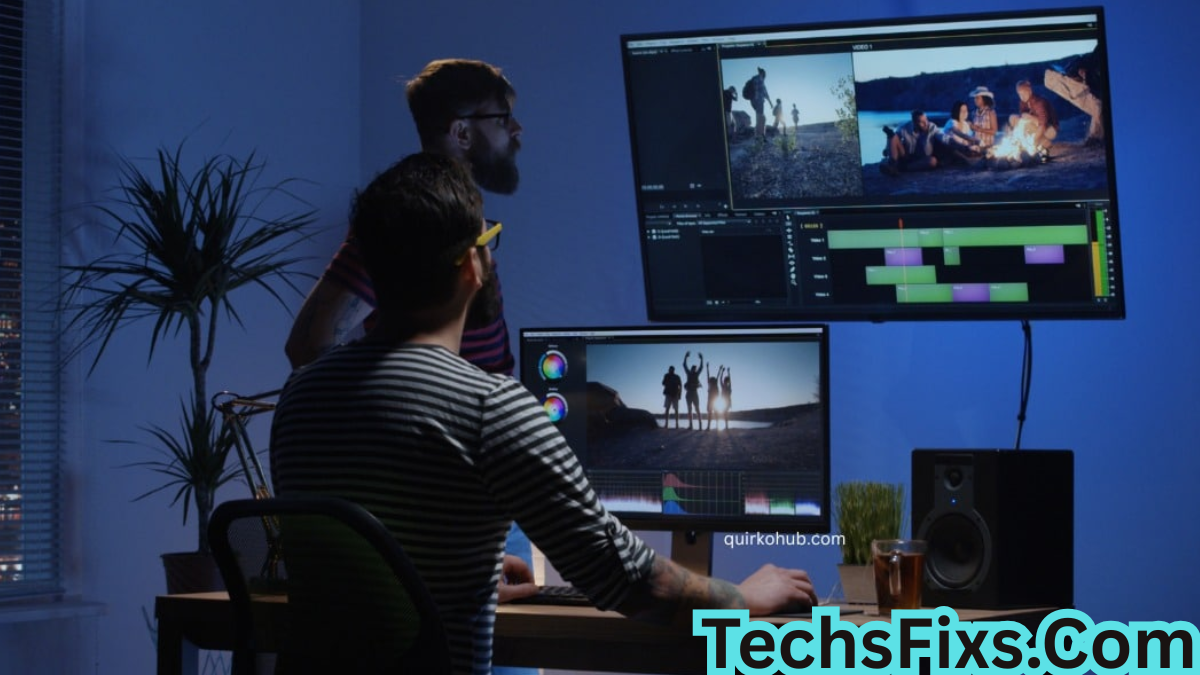Understanding the Basics of SFM
Source Filmmaker, commonly abbreviated as SFM, is a powerful video capture and editing tool developed by Valve Corporation. Built on the Source engine, SFM enables creators to make cinematic animations using assets from games like Team Fortress 2, Left 4 Dead, and Half-Life. One of the defining features of SFM is its use of real-time rendering, allowing creators to view their edits instantaneously.
The concept of “compiling” within SFM refers to the process of rendering a finalized video from the animation timeline. It turns the working file of your project into a playable video format that can be shared online or stored locally. While the term “SFM Compile” in most development contexts refers to converting source code into executable software, in SFM it means transforming a sequence of frames into a usable video file.
Preparing an SFM Project for Compilation
Before diving into the actual process of compilation, it’s essential to ensure that the SFM project is prepared properly. This includes organizing shots, setting up lighting, finalizing character animations, and adjusting camera movements. The rendering settings must also be reviewed, including resolution, frame rate, and anti-aliasing preferences.
SFM uses a timeline-based structure where each element—models, lights, sounds, and cameras—can be controlled through keyframes. Efficient use of the timeline and the graph editor allows for smoother animation, which ultimately results in a more professional final render. All these elements must be finalized prior to initiating the compile phase.
The Technical Process of Compiling in SFM
To compile a video in SFM, the user needs to go through the Export menu. Within this menu, there are several options for exporting a project. The most common choice is the “Image Sequence” or the “Movie” option. If a creator wants the highest quality, they often choose to render as an image sequence and then use a third-party program to stitch the frames together into a video. This provides more control over compression and quality.
Alternatively, using the built-in “Movie” export option allows for a faster and more integrated process. Users select their desired resolution, frame rate, and codec. Popular choices include H.264, AVI, or QuickTime. The compile process also allows the selection of audio sources, so it’s crucial that sound cues, voiceovers, and background music are synchronized with the timeline before compiling.
During compilation, SFM processes each frame of the animation. If the project is resource-intensive with many high-resolution textures, particles, and lighting effects, the compile process can be time-consuming. The frame-by-frame rendering approach ensures precision but demands a powerful GPU and sufficient memory to avoid crashes or slowdowns.
Dealing with Common Compile Errors
Compiling in SFM is not always smooth, especially for beginners. Common issues can include black screens in the final render, missing textures, audio desynchronization, or crashes during the render process. These problems often arise from improper settings or corrupt assets in the session.
A common troubleshooting method is to verify that all models and textures are properly loaded. Missing textures can result from broken workshop downloads or mislinked custom assets. Ensuring that all custom content is correctly installed in the usermod directory is essential. Sound issues usually stem from incorrect sample rates or improperly placed audio cues in the timeline.
Users also need to watch out for overly complex scenes with many dynamic lights, particle effects, and physics simulations. Simplifying these elements or reducing the resolution can help make the compilation process more stable. In extreme cases, splitting the animation into smaller segments and compiling each separately can be an effective workaround.
Advanced Compilation Techniques
For users who want more control and higher quality, there are advanced compilation workflows. Rendering image sequences in PNG or TGA formats provides lossless quality. These frames can then be imported into Adobe Premiere, After Effects, DaVinci Resolve, or similar video editing software for color grading, transitions, and effects.
Some creators also use frame interpolation tools or AI upscaling software to enhance the visual quality of their SFM videos. Compiling at a lower resolution and upscaling it later can be more efficient in terms of hardware usage while still achieving acceptable visual results.
Another advanced technique involves rendering depth of field and motion blur as separate passes. By enabling render layers or exporting multiple passes, creators can composite them later in post-production. This approach mimics professional VFX pipelines and elevates the overall cinematic quality of the output.
Best Practices for SFM Compilation
Efficient SFM compilation is about balancing quality, performance, and stability. Using a separate drive for cache files and keeping the system’s GPU drivers updated can significantly reduce the likelihood of compilation issues. It’s also advisable to close unnecessary background applications to free up memory during rendering.
Saving frequently and using different save versions for each milestone in the project can be a lifesaver if something goes wrong during compile. SFM is known to crash unexpectedly, and having backups allows for quick recovery.
Selecting the right frame rate is another important step. Most cinematic animations use 24 frames per second for a more traditional film look, while higher frame rates like 30 or 60 can be used for smoother results. The resolution must also be determined based on the target platform. For YouTube, 1920×1080 (Full HD) or 3840×2160 (4K) are standard.
Integration with External Tools
Many SFM users integrate the software with external tools to enhance their workflow. Blender is one such example. Creators often animate scenes in SFM and then export models or sequences to Blender for advanced lighting or physics simulation. While SFM lacks native support for some modern rendering technologies like ray tracing, these external tools fill in the gaps.
Audio editing software like Audacity or Reaper can also be used in parallel. Instead of relying solely on SFM’s built-in audio editing, creators export dialogue and music to these tools for mixing and mastering, then import the final track back into SFM before compiling.
Third-party renderers are rarely used directly with SFM, but some users extract models and scenes to re-render them with engines like Unreal Engine or Unity for projects requiring higher fidelity. While this diverges from traditional SFM usage, it underscores the flexibility and modularity of the workflow surrounding compilation.
The Role of Hardware in Compilation Performance
The speed and quality of an SFM compile are heavily influenced by the computer’s hardware. A high-end GPU is perhaps the most critical component, as SFM leverages GPU rendering during compile. VRAM is especially important when dealing with high-resolution textures and complex lighting.
CPU performance also plays a role, particularly in managing simulation and frame handling. A multi-core processor can improve performance, though SFM is not always fully optimized for multi-threading. SSD storage helps in reading and writing large image sequences quickly, reducing compile times.
For long compilations, especially those rendering at 4K or beyond, thermal management becomes important. Ensuring that the system has proper cooling will prevent throttling or hardware failure during prolonged rendering sessions.
Community and Resources for Compile Support
The SFM community plays a significant role in helping newcomers and experienced users alike troubleshoot and optimize their compile workflows. Forums, Discord servers, and YouTube channels dedicated to SFM offer tutorials, guides, and scripts that simplify the process.
Many SFM users share their custom compile presets or post-production workflows. This collaborative culture fosters innovation and ensures that new users can learn from experienced animators. The Steam Workshop also serves as a hub for downloadable assets that can be used in projects, but users must ensure they are properly installed to avoid issues during compilation.
Documentation for SFM, while somewhat outdated, still provides foundational knowledge. Valve’s original guides and the Source Developer Wiki are valuable resources when trying to understand technical terms or resolve compile-specific issues.
The Evolution of SFM and Compilation Standards
Since its release, SFM has seen limited updates, but the community has evolved its usage significantly. Compilation techniques that once seemed advanced are now considered standard. The growing expectations for higher visual fidelity in machinima and animated shorts have pushed users to innovate within SFM’s constraints.
Modern expectations often demand 4K resolution, cinematic lighting, realistic animations, and professional sound design. As a result, the compile process has become more sophisticated. Creators are expected to manage multiple software tools in tandem with SFM to meet these standards.
Even as newer animation platforms become available, SFM remains a vital part of the creative ecosystem for its ease of use and direct integration with the Source engine. Understanding how to compile properly is key to fully unlocking SFM’s potential.
Future Possibilities and Compilation Workflows
While SFM itself may not receive significant updates from Valve, the future of SFM compilation lies in community-driven enhancements and integration with other tools. Community mods or custom builds of SFM have introduced features like improved UI, expanded render options, and more stable compiling engines.
AI-assisted tools could also revolutionize SFM workflows. Automated lip-syncing, upscaling, and frame interpolation are already available, and they are likely to become staples in the compile phase in the future. These tools can dramatically reduce rendering times while improving output quality.
Additionally, cloud-based rendering may emerge as a viable option. While SFM Compile is designed as a local application, future solutions could include exporting projects for cloud compilation, enabling users with low-spec machines to produce high-end results.
Conclusion
Compiling in SFM is a crucial stage that transforms a creative idea into a tangible visual product. While the process can be technically demanding, mastering it unlocks the full power of the Source Filmmaker platform. From basic export settings to advanced image sequence workflows and post-production compositing, the compile process is where artistry meets technical execution. As technology continues to evolve and the community remains active, the standards and tools for compiling in SFM will only improve, empowering creators to produce more impressive and immersive animations.




